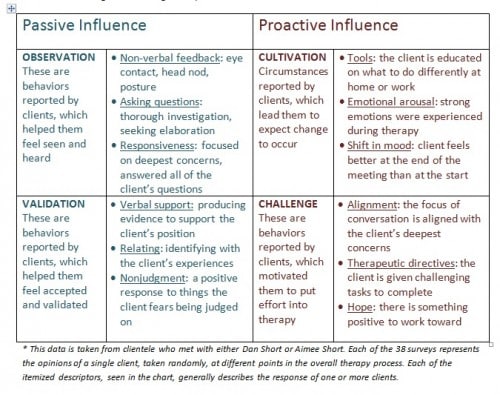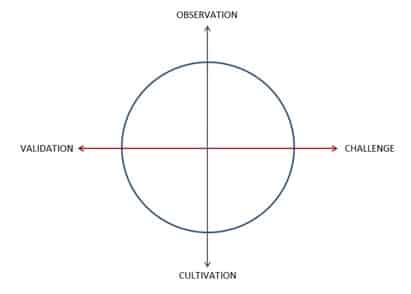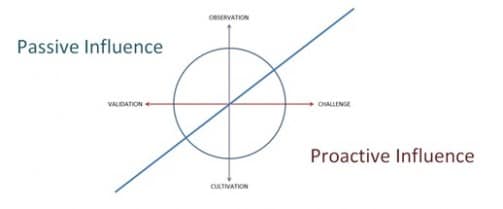The Most Important Skill in Therapy
If there is any single skill that might be used to summarize what the most effective Ericksonian therapists are able to do really well, it would be the general ability to connect with others in deep and compelling ways. Whether you are describing the therapist’s use of effective communication, interpersonal flexibility, skillful observation, or love and compassion, it all comes back to the therapist’s ability to form a meaningful connection with those who are otherwise lost or isolated in some problematic life-circumstance.
Like explorers searching for a city of gold, many students of therapy are trying to learn special curative techniques. But the real treasure is found in the state of relationship that is formed, while using one technique or another. It is said that Ericksonian therapy is done WITH rather than TO the client. This statement implies a collaborative underpinning that exists in support of every technique. Erickson often spoke of the primary importance of securing the client’s trust and cooperative involvement as a prerequisite to any other thing to be done in therapy. This emphasis on relational foundations has now been recognized in the broader field as a common factor in all successful therapies.
This common factor is generally referred to in terms of building a therapeutic alliance, which in the context of hypnosis has historically been described as rapport, and in more recent times also referred to as attunement and attachment. In addition to these two important dynamics (i.e., collaboration and alliance), it has been argued that the primary benefit of Ericksonian therapy is the model it provides for engaging the heart and opening the mind. The relationship that forms during Ericksonian therapy is designed to be both emotionally deep and highly motivating. The basic idea is that clients must feel at deep levels that their therapist cares and is acting on behalf of their well-being. All of the techniques of Ericksonian therapy are assumed to be helpful only when conducted within the context of this special form of relationship. The question that remains is, “How is this done?” Some of the answer necessarily comes from your own unconscious and from a lifetime of experience interacting with others—both your mistakes and your accomplishments. And, some of the answer can come from study. To gain a good intellectual grasp of the task that is before you, we can break down the therapeutic relationship into four key elements. These four elements are displayed in the chart below.
During a 2016 survey of teachers and scholars of Ericksonian therapy from around the world, there were four broad categories of interpersonal engagement that were commonly endorsed. These ideas have been grouped under the umbrella terms: observation, validation, cultivation, and challenge. Each of these have been described in fuller detail in the 2017 edition of the Core Competencies Manual for Ericksonian Therapy, which can be downloaded from my website.
In order to better study these ideas, a survey device was created so that I could collect information from clients on each of these dimensions. This form was called the “RFS-SC.” After 38 responses were collected, the results were analyzed to see what could be learned. To make the model more concise, these four dimensions were broken down into two types of influence: passive or proactive. Both are assumed to be important for a balanced approach to therapeutic relating. It can be thought of as two types of communication, one intended for receiving and one intended for sending. Obviously, both are important.
The results from the survey, of private practice clients, were then analyzed at a qualitative level. A majority of the responses by clients (97%, n=38) where accounted for, or summarized, using the following descriptors that are outlined in the following table.  Obviously, this chart does not tell you everything you need to know about forming a deep connection with clients. Rather, it should be seen as a sign that points you in the right direction. It helps you see what types of questions you should be asking yourself, or the client, at the end of therapy sessions. Most importantly, you need to make it your top priority to keep learning as much as you can about what is possible when seeking to establish a deep emotional and intellectual connection with others.
Obviously, this chart does not tell you everything you need to know about forming a deep connection with clients. Rather, it should be seen as a sign that points you in the right direction. It helps you see what types of questions you should be asking yourself, or the client, at the end of therapy sessions. Most importantly, you need to make it your top priority to keep learning as much as you can about what is possible when seeking to establish a deep emotional and intellectual connection with others.
https://mirziamov.ru/mfo-online/zaim-ekapusta.html



 BOL: I hope our conversation will focus on the how-to of intervening in order to enhance the performance of organizations. You are a master of that art, but your most important work has focussed elsewhere: on understanding the nature of the organization,...
BOL: I hope our conversation will focus on the how-to of intervening in order to enhance the performance of organizations. You are a master of that art, but your most important work has focussed elsewhere: on understanding the nature of the organization,...  BOL: Alfred Adler’s name is better known to today’s therapists than are his ideas and methods. Your dedication to this body of work must be based on the belief that contemporary practice is diminished because Adler’s contributions are not...
BOL: Alfred Adler’s name is better known to today’s therapists than are his ideas and methods. Your dedication to this body of work must be based on the belief that contemporary practice is diminished because Adler’s contributions are not...
This is also why it’s important for patients to find a therapist that they are comfortable with!